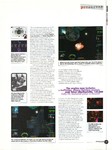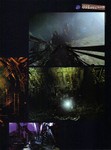Bandit LOAF
Long Live the Confederation!
We've unearthed a fascinating piece of pre-history: a detailed preview of Privateer 2: The Darkening from the August 1996 issue of Edge magazine... written when the game was still just called 'The Darkening!' The article includes a beautiful two-page gallery of artwork, plenty of pre-release screenshots and a surprising amount of technical detail about the game's development team. "Owen Roberts" is a first, though!






--
Original update published on September 15, 2018






--
Original update published on September 15, 2018
